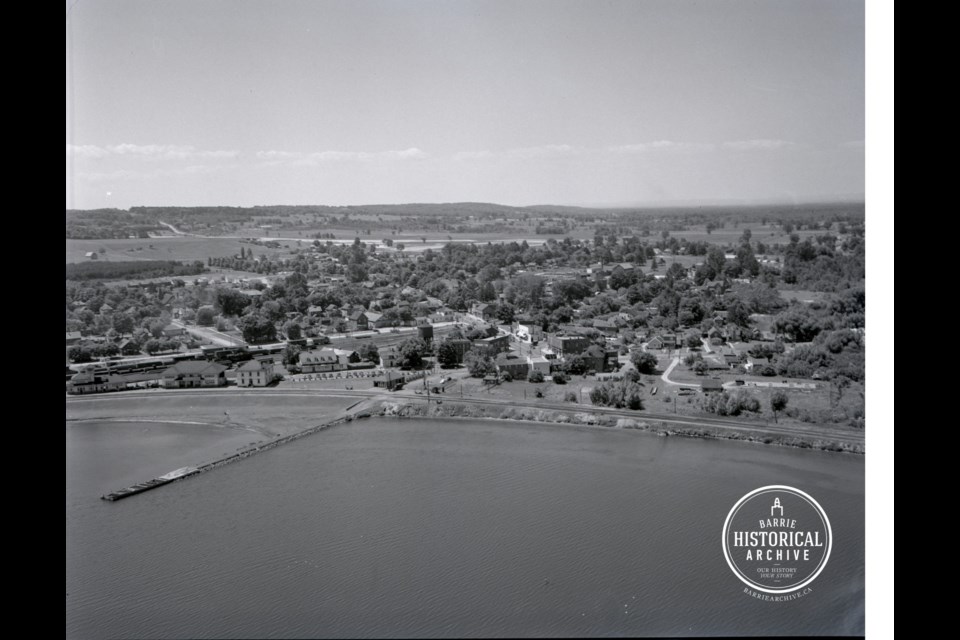After a hiatus, the Barrie Historical Archive's Mary Harris returns today with her popular column on local history. Enjoy!
The archived pages of the old Barrie newspapers are filled with almost daily accounts of injuries and death associated with the railway industry.
In 1907, after years of horrifying accidents among railway workers, the Ontario Trainmen’s Association petitioned the Board of Railway Commissioners for some proper safety regulations.
In a 2017 article written by Canadian Transportation Agency CEO Scott Streiner, it was apparent that the request was an urgent one: “The workers had reason to be concerned. In the 12-month period ending in March 31, 1908, the death toll in railway accidents was 529 with 1,309 people injured. Among the dead were 246 employees. An alarming 806 rail workers had been injured.”
James O’Neill likely never imagined himself to be counted in that grim tally.
Patrick and Ellen O’Neill arrived in Emily Township, Victoria County, some time around 1839 after leaving their native Tipperary, Ireland. They brought with them six children and added three more in this country.
Their son, John O’Neill, married a local Irish-born lass and started a family that eventually numbered 12 children. Among them, was James, who was born in 1875.
James, who had grown up on his father’s farm, was working in the same line of work when he married Margaret Winn in 1900 at Downeyville, just east of Lindsay, Ont.
Eleven years later, James O’Neill was working in a new occupation. He was a brakeman for the Grand Trunk Railway. This line of work is most certainly what brought him, Margaret and their four children to Barrie by at least 1913, at which time he was a switchman.
The working conditions for this position were described in the June 1886 edition of Switchmen’s Journal.
"The vocation is the most dangerous of any of the different branches of railroading, and that (some) live for years is only due to their extreme carefulness. The least misstep will often result in crippling a man for life. Their hours of work are long, and the labour very hard, and rain or shine they have to be at their posts. There is no protection for them from the rains of summer, nor the freezing winds and snows of winter.”
Although it is not clear exactly when this happened, James O’Neill suffered a catastrophic injury. The result of his workplace accident was the loss of his right arm.
It appears that some form of compensation was available to railway workers by this time, as James O’Neill reportedly received about $1,000 for his suffering. Perhaps this was not enough to cover his family expenses, because James soon took some drastic steps to improve his finances.
The first sign that something fishy was going on came on Feb. 20, 1914, when a teller at the Barrie branch of the Bank of Toronto suspected that a Bank of Montreal bank note was a fake.
It should be mentioned that, up until 1944, chartered banks in Canada were allowed to issue their own bank notes for circulation.
The suspect $10 bill had been part of a deposit brought in by the Devlin and Murchison store on Dunlop Street. When the staff members of the shop were questioned, a clerk remembered receiving the bill from a one-armed man.
In all, four bills found their way through Wisdom’s Store, two hotels, Hinds Bros. Grocery, the Bank of Nova Scotia and as far as Melville, Sask., when a local man attempted to buy a rail ticket with one. Surprisingly, the ticket agent refused the bill, but nothing else was done about it and the man carried on his way after paying with a legal note.
As you can imagine, it wasn’t long before the local constabulary caught up with James O’Neill at his Bradford Street home. He was arrested and was soon singing like a canary, as they say.
The source of the bogus bills was a counterfeit operation located back in Lindsay, Ont. O’Neill named John Burkholder and Charles Burke as accomplices and the provincial police went to Lindsay and rounded the up the pair.
Burkholder admitted he was involved in the scheme, but tried to minimize his part in it. He couldn’t very well deny everything as the paper, plate, roller and other money-making equipment were all found in his house. Burkholder stated that the items belonged to O’Neill, who had left them with him when he relocated to Barrie – the old ‘I’m holding it for a friend’ justification.
Burkholder added that O’Neill had contributed $300 out of his compensation money to start the shady business.
Burke claimed complete innocence. Interestingly, his defense was that his name was only being mixed up in the affair because he “had something to do with a (similar) case a few years ago.”
As a supposedly reformed counterfeiter, he said that he had seen the equipment, which was too old to work, and that the paper was not of the proper type for money printing.
None of these defenses worked very well for Burkholder and Burke and they each got five years in Kingston Penitentiary.
James O’Neill, who had confessed and assisted in the prosecution of the other two, was given half of that time. He was popular, despite his crime, and a petition for leniency had been widely signed in Barrie.
It would seem that James O’Neill was released for good behavior a little while before his sentence was complete. On June 9, 1916, he arrived in Port Huron, Mich., with $15 in his pocket. He stated that he was married and that he was Canadian born, his last address in this country being 256 Bradford St., Barrie, Ont.
In 1920, after he established himself in Chicago, Ill., James O’Neill was joined by his family. He continued to work in the railway industry and was employed as a train conductor at the time of his death in 1944.



